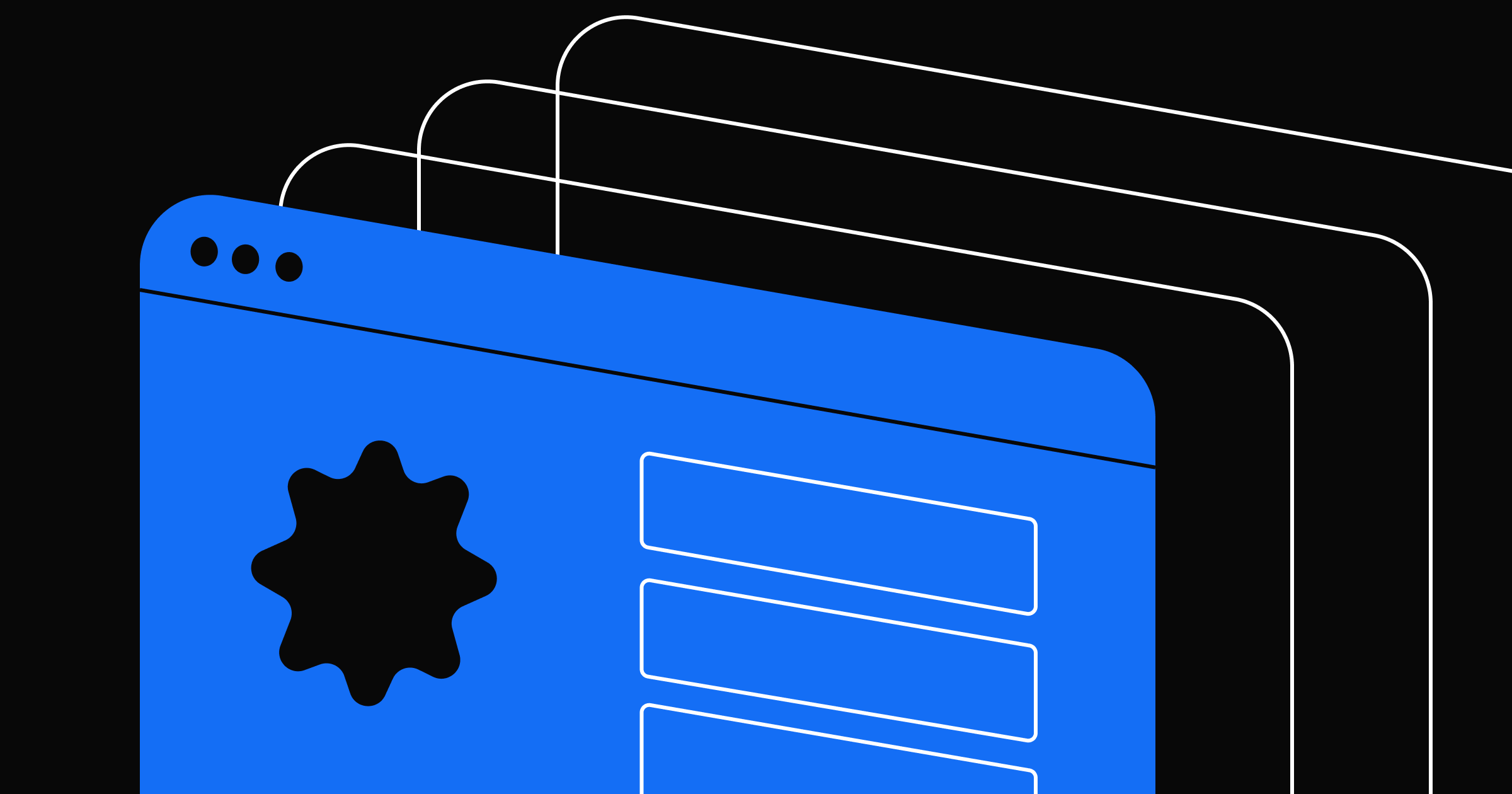As more businesses look to prioritize speed and scale, having the right technology in place is critical.
One critical piece of modern tech stacks is a content management system (CMS). Used for more than 68 million websites worldwide, a CMS allows users to build and manage website content without needing technical skills or coding knowledge. However, as more players have entered the field over the years, complexity has risen.
A CMS that doesn’t prioritize self-service for marketers will almost certainly lead to frustration and delays. Unfortunately, the two of the primary types of CMS platforms used for multi-channel content distribution — a headless CMS and a digital experience platform (DXP) — often clip the wings of marketers hoping to launch and iterate new ideas quickly.
Below, let’s explore these two different types of CMSs, walk through the critical requirements marketing teams should look for in a CMS, and explore what it means to have a next-gen CMS.
What is a monolithic DXP?
A monolithic DXP is composed of an integrated set of core technologies that support the creation, management, and delivery of omnichannel digital experiences, such as Adobe Experience Manager. It consists of consolidated solutions that aim to reduce the number of tools within your tech stack, helping to streamline operations. Its tightly integrated nature simplifies procurement and compatibility with other tools, providing smooth workflows.
However, these solutions come with their own set of challenges. The platform's rigidity can hinder marketing teams' flexibility, innovation, speed, and autonomy, blocking them from quickly adapting to evolving needs. DXPs also lack user-friendly interfaces for marketers, creating a heavy burden for engineering. And extracting data from these platforms can also be costly and complicated.
What is a headless CMS?
A headless CMS decouples the front-end from the back-end, making it a very developer-driven solution. For companies with extensive developer resources, a headless CMS may offer a high level of control and modularity.
However, similar to a traditional, monolithic DXP, the reliance on developers for even minor updates to a website can take days or weeks, stripping marketers of autonomy and hindering their ability to hit their goals.
5 essential requirements for a powerful CMS
We recently chatted with Austin Kueffner, a partner at Outliant, to get his point-of-view on the strengths and weaknesses of different CMSs and what marketing teams should consider when assessing how to deliver on their goals and needs.
During our conversation, he outlined five core pieces of criteria modern teams should look for in a CMS:
- Be self-service for marketers
- Have a powerful front-end
- Be extensible
- Provides multi-channel support
- Gives marketers the ability to optimize user interfaces (UI).
Below, let’s look at how headless solutions and DXPs stack up against these five core requirements.
1. Self-service for marketers
To be genuinely useful to marketers, a website must respond to their needs, but too many marketers are constrained by a slow back-end process. “When marketers can build and manage sites without relying heavily on developers, they can execute campaigns faster and more effectively,” Austin said. Unfortunately, as our survey of 500 marketing leaders reveals, roughly 80% of marketing leaders feel restricted in making even small changes to their site without dev help.
Headless CMSs offer flexibility and customization, but they come with a significant engineering burden because each connection and feature must be built, tested, and maintained. As a result, marketers become dependent on engineers for even the simplest of updates and experiences.
DXPs are a tightly integrated bundle of services, and while they are accessible to marketers, it can be difficult or near-impossible to use them to create pages and sites that work in ways your team didn’t initially plan for. As a result, developers are necessary to build more custom web experiences.
2. A powerful front-end
Marketers should be focused on optimizing for the user journey, not fighting with frustrating software limitations. A powerful front-end is the client-facing side of a solution — the part that end-users interact with — and should be both accessible and power highly-custom experiences to be truly powerful. This presentation layer includes the entire user interface (UI), the visual design, and functionality that users can see and use. Examples include menus, buttons, forms, and content.
Headless CMSs are highly flexible and customizable, but anything beyond the default configuration requires an extra round of engineering support. Even if the audience-facing output is beautiful, the backend is likely an amalgamation of inflexible text fields and checkboxes. As a result, it often makes building new web experiences quite time consuming.
DXPs provide comprehensive tools that enhance website experiences. This provides more robust support for things like analytics, personalization, digital asset management (DAM). The tradeoff is the heavy implementation burden and limited ability to build templates, requiring a nearly complete reliance on developers.



















Rethink your CMS
Find out why a cutting-edge enterprise CMS is not just a nice-to-have, but a necessity for teams.
3. Extensible
You’re likely going to want your CMS to integrate with the tools you currently or may use to track and optimize your business, such as analytics, eCommerce solutions, and a CRM. Austin explains that “a composable architecture allows teams to stay agile and adopt new technologies as they emerge."
Headless CMSs are highly composable, or able to interconnect and integrate with different systems. However, configuring these and maintaining these connections requires a dedicated team of developers.
DXPs consist of a bundle of components and functionalities tightly integrated into a single, unified system. While they are technically extensible via APIs, each of these implementations is fully custom — which isn’t exactly practical for scale of repeatability.
4. Multi-channel support
From ads to social posts to newsletters, your content needs to go far beyond your website and support the entire customer journey across touchpoints.
Headless CMSs support strong omnichannel capabilities but require complex orchestration through APIs.
DXPs are also able to support multichannel experience creation but require integrations and APIs to successfully execute them — making setup complex.
5. UI optimization
Enhancing their website’s user interface (UI) with features integrated into the building process, such as search engine optimization (SEO) and automated, proactive checks for accessibility, is a critical requirement for a powerful CMS.
Headless CMS platforms offer limited tools by default for non-technical users, often requiring developer input to make technical improvements or integrate third-party tools for things like SEO and accessibility.
DXPs typically include native features like SEO tooling, but they can be challenging to use or are limited in their coverage and flexibility.
A next-gen CMS provide a balance of power and autonomy
Austin shared what he calls a “next-gen CMS” as the solution to delivering truly powerful web and content experiences.
A next-gen CMS is an advanced platform that surpasses traditional CMS platforms, integrating the best and most innovative technology like AI, machine learning, and advanced analytics. It offers a seamless user experience for both marketers and designers with a powerful front-end, enabling them to create bespoke frontend experiences autonomously and without engineering support.
How a next-gen CMS stacks up
When looking at the five core requirements for a powerful CMS, a next-gen CMS checks all of the boxes.
- Self-service for marketers: A next-gen CMS allows marketers to build and manage sites and pages with no technical intervention using modular elements, while still allowing customization through code when necessary.
- Powerful front-end: It combines the best aspects of both by offering a user-friendly front end that supports visual template creation for localized and scaled content, along with customizable code for developers.
- Extensible: It provides a composable architecture like a headless CMS, but makes it a lot easier to add or remove best-in-breed tools with simple configurations.
- Multi-channel support: A next-gen CMS makes it easy to plug into a wide variety of channels with minimal engineering effort, ensuring reliable distribution across diverse platforms.
- UI optimization: A next-gen CMS democratizes SEO, providing tools for non-technical users to optimize content effectively. Automated, proactive checks for accessibility and best practices are also integrated into the site build process, ensuring high standards from the outset. They also integrate well with tools to support personalization and analytics that are essential to optimizing user experiences.
With a next-gen CMS, marketers can move quickly and own more of the website. Designers can create engaging visual stories that are on-brand consistently and at scale. And developers, who are often drowning in constant requests from marketing, can now focus on the highest-impact projects.
The future of CMS platforms
Reshaping the way you think about your CMS can catapult your team's efficiency to new heights and help achieve all of your website goals. We encourage you to consider Austin’s framework and evaluate your CMS across these five key requirements — self-service, usability, extensibility, multi-channel support, and UI optimization. Doing so is a powerful exercise that can help you compare your business needs against your tech stack to ensure you have the tooling in place that you need to deliver on your goals.
For teams who have significant developer resources in place and want to prioritize highly custom web experiences above all, a headless solution may be a good fit. And for those with ample engineers and are willing to trade speed to simplify and minimize the number of tools in their stack, a DXP may fulfill their needs. For marketing teams looking to prioritize usability, composability, and speed, a next-gen CMS is a great solution to explore further.
If you’d like to go deeper into how different CMS solutions stack up, watch our full webinar with Austin to his in-depth industry insights, and to learn more about next-gen solutions like Webflow’s visual, composable CMS, get more details here.

Build websites that get results.
Build visually, publish instantly, and scale safely and quickly — without writing a line of code. All with Webflow's website experience platform.






























